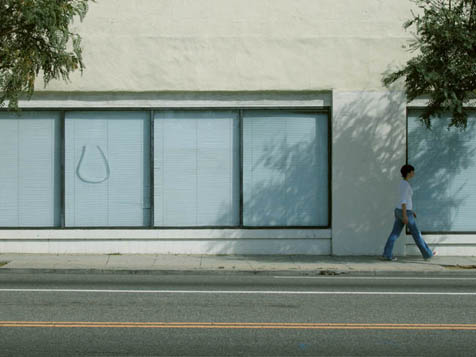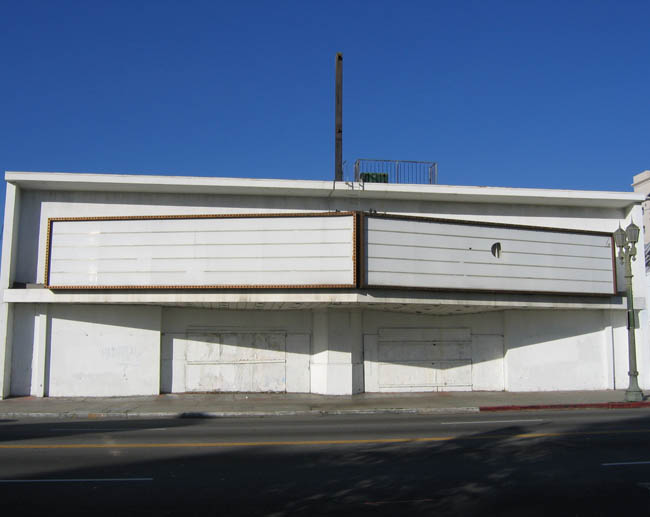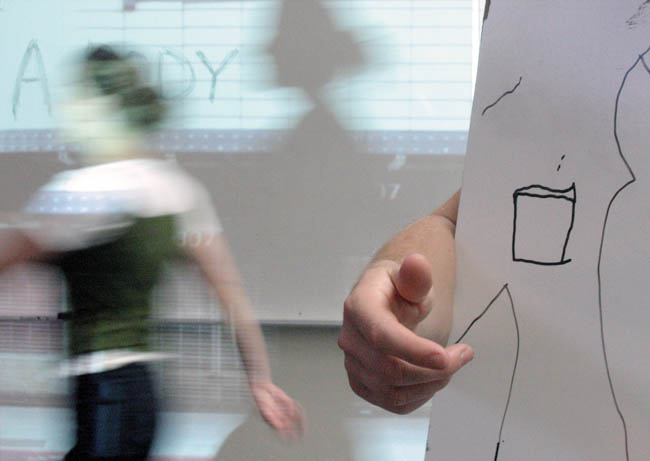Artist Sara Wookey Walks Los Angeles
Pounding the Pavement, Reading the City

When dance artist Sara Wookey moved to Los Angeles in 2004 after 10 years in Europe, her first impression was of being stuck on fast-forward. The onetime N.Y.C.-dwelling dancer had adjusted to the mellow pace of Amsterdam. L.A., by contrast, screamed for her attention, its text-laden billboards, posters, and shop windows flying by at freeway speeds. Wookey’s startled reaction to her homecoming became the basis for a UCLA master’s project-Drift L.A.-in which she conducted a series of walks in Los Angeles in an attempt to slow down enough to “read” the city. This weekend, Wookey will be in residence at UCSB, rehearsing for a performance based on the project, and hosting a public discussion of her work. Wookey spoke to me on the phone last week, still jet-lagged from her most recent return from Amsterdam.

Welcome back again-how does it feel this time? I’m remembering again this overwhelming experience of seeing the city so fast. In Amsterdam, the city center is about 85 percent residential; you don’t find massive billboards. When I was first in L.A., my eyes were exhausted all the time. I realized that if I was going to be reading the city in general, I had to slow down. I started seeking out what I call “breathing rooms,” areas where my eyes could rest and I could use my imagination.
ome say there are two kinds of Californians: those who love L.A. and those who hate it. Which are you? It’s a love-hate relationship, I think. Amsterdam was very soft for me; it’s like a museum-beautiful, exquisite. I kind of missed the dirt, the angst that L.A. certainly can offer. In another sense, there was the question of how I respond to that when I have it. Right now it sort of disgusts me.

You started out by going for long walks in the city, and now you’re working on a performance based on those walks and your findings-what were your initial inspirations, and how has the project evolved? The performance, which I’ll be showing in L.A. and San Diego this winter, is called Walking L.A. I was inspired by the Situationist International movement in Paris in the 1960s, when a group of artists wanted to create intervention performance events, getting people to experience the city in alternative ways. I spent over two years in L.A. doing organized and solo walks. For the master’s project, I’m focusing more on crafting a performance from those experiences.
What will that involve? I have two performers working with me. I’ve also gathered material: various texts, and about 300 photographs I took during the walks. Some of those images will be projected as part of the performance. Some of the texts come from my diary of walking; others are references to walking from other writers.
How does dance work as a medium for the communication of the concepts you’re working with? It’s hard for me to define my work simply as dance. I think of it more as performance, because it’s very multidisciplinary and visual. I think I am trying to fill in these blank, modernist images with the body-even the shadow of the body falling across the images. It’s not so much that I’m doing anything abstract or dancerly-but in a simple sense, I can connect more intimately with the city walking than I can in a car. It’s about having a more intimate, corporeal connection with the city.
In what ways does the text you’re using inform the movement; where does the movement arise? I have to say I think it’s the photos that are the starting point, because that’s what I collected from the walks. The performers are not trained dancers; I have tried to choreograph movement for them, and it inevitably fails because it feels forced. So I’ve had to shift my process to think in terms of ordinary activities-basic, pedestrian-like actions.
I like the idea that you’re using the body to “read” the city, and that movement itself becomes a kind of physical reading process. Yes, I think of Pina Bausch [the German experimental choreographer]-she is so brilliant at taking an action and repeating it and repeating it until it takes on some kind of meaning. I really think the general public has trouble ‘reading’ dance because it only happens once. It’s like trying to read a language you don’t know, so I think for years I’ve been trying to create dance that the general audience can read and sense-that they can recognize and feel.
What are your hopes for your talk at UCSB? I’m really eager to get people to come to the talk who have interest in fields from urban planning to architecture to geography, not just dance. It’s an open invitation to those outside dance and the performing arts to come with questions.
4•1•1
Sara Wookey will be holding open rehearsals for Walking L.A. at UCSB on Saturday, October 13 and Sunday, October 14, and will give a public talk followed by an open discussion on Monday, October 15 at 5 p.m. in the UCSB Ballet Studio, 1151 HSSB. For more information, visit sarawookey.com



